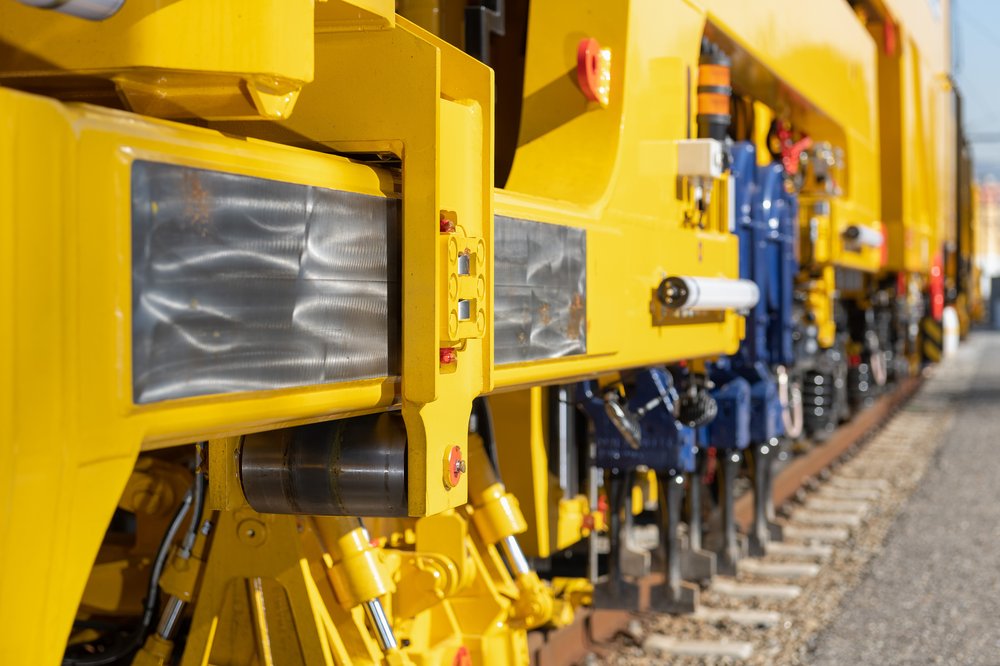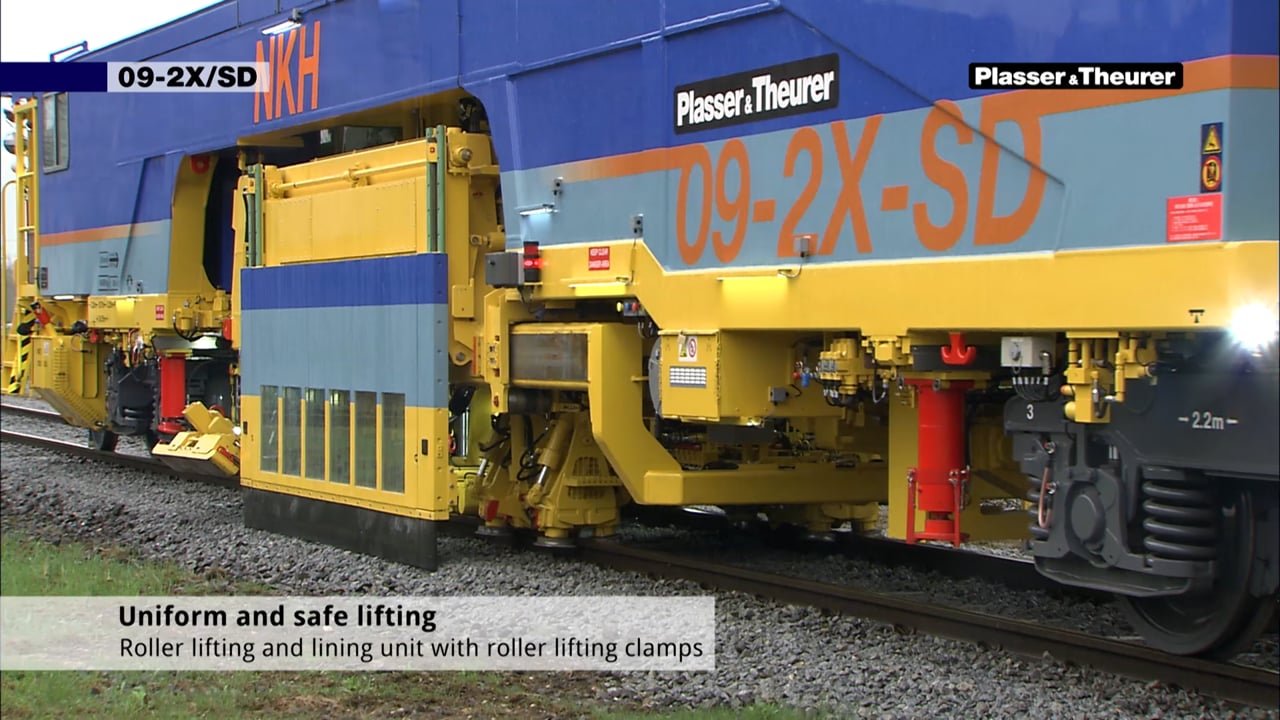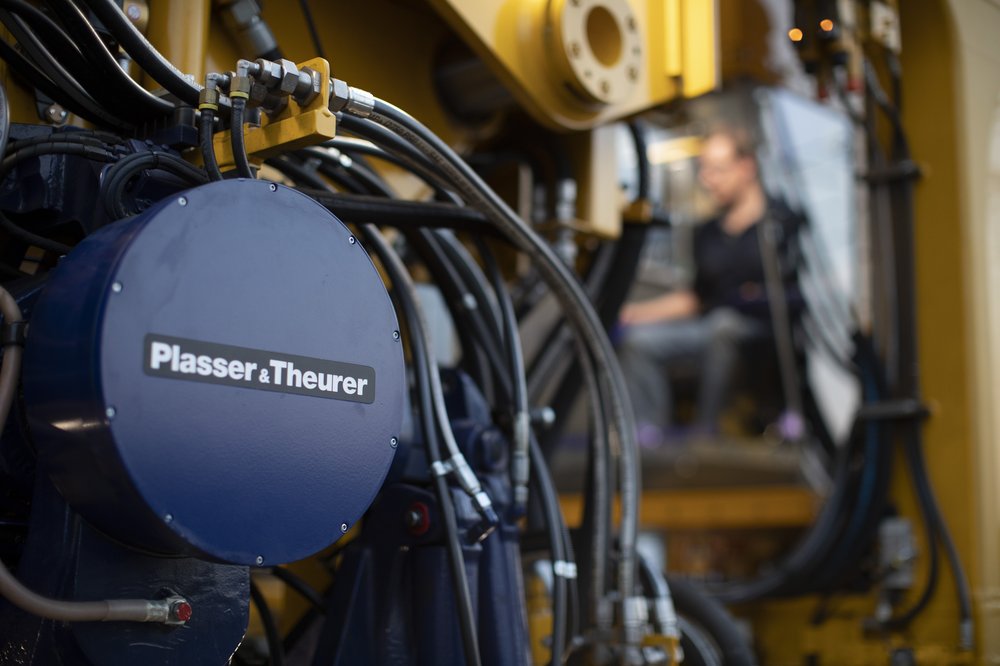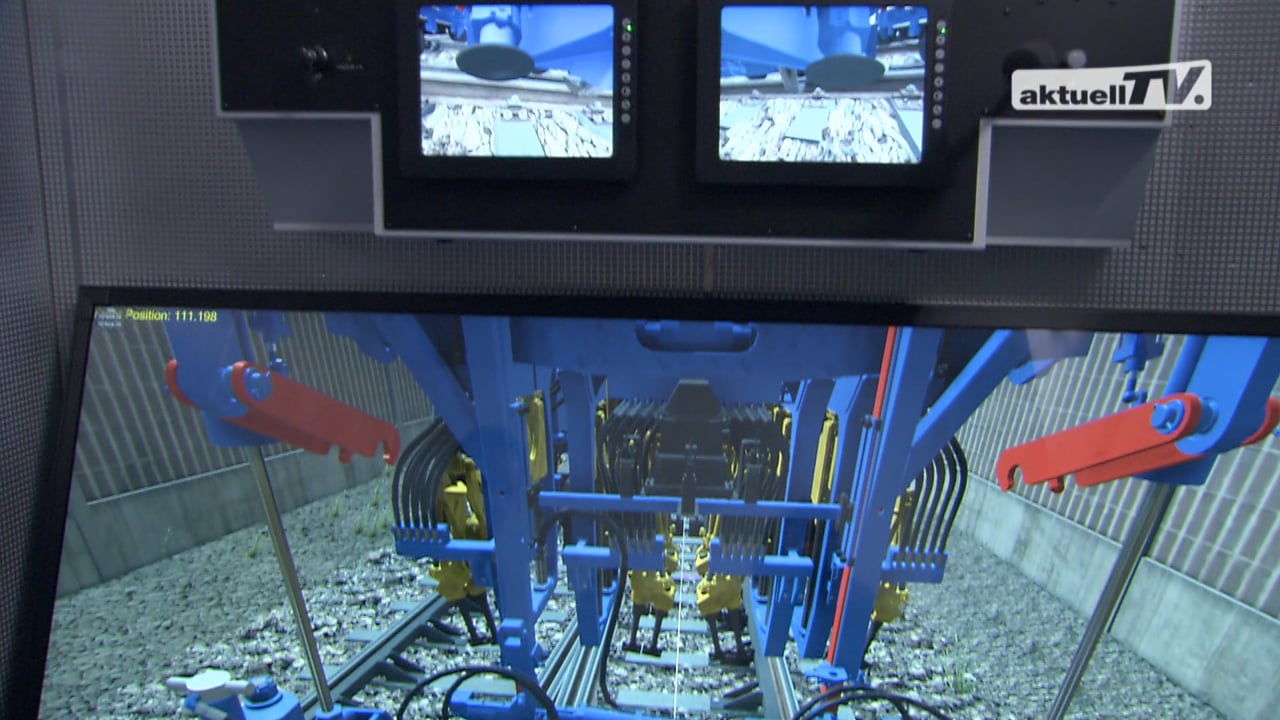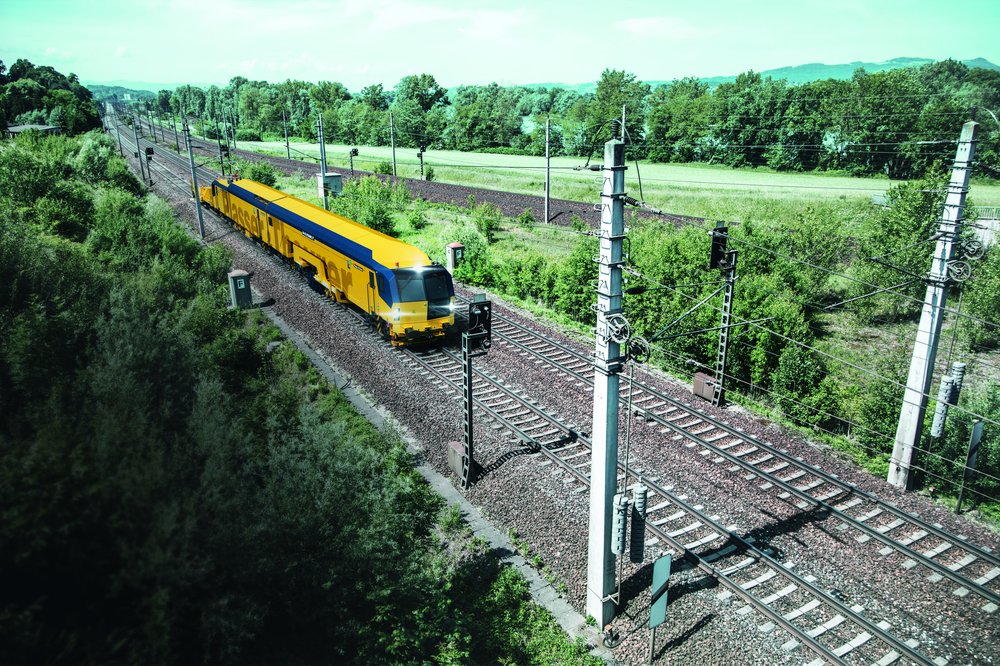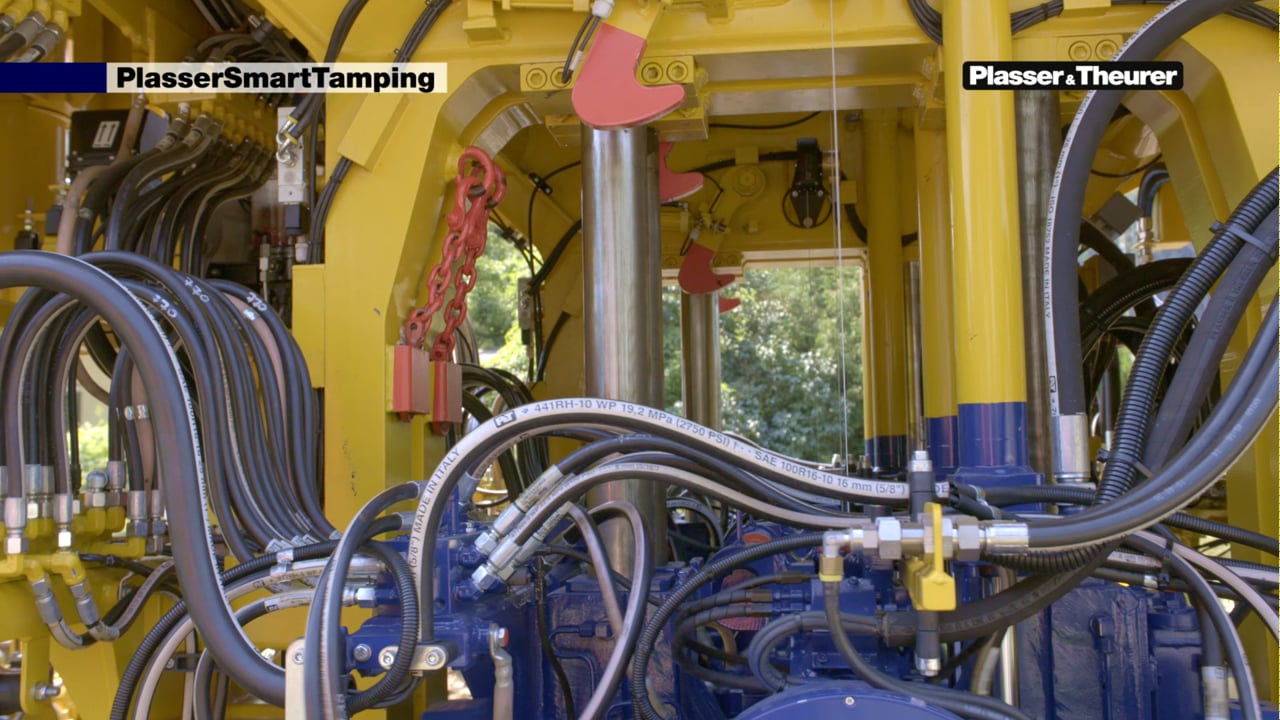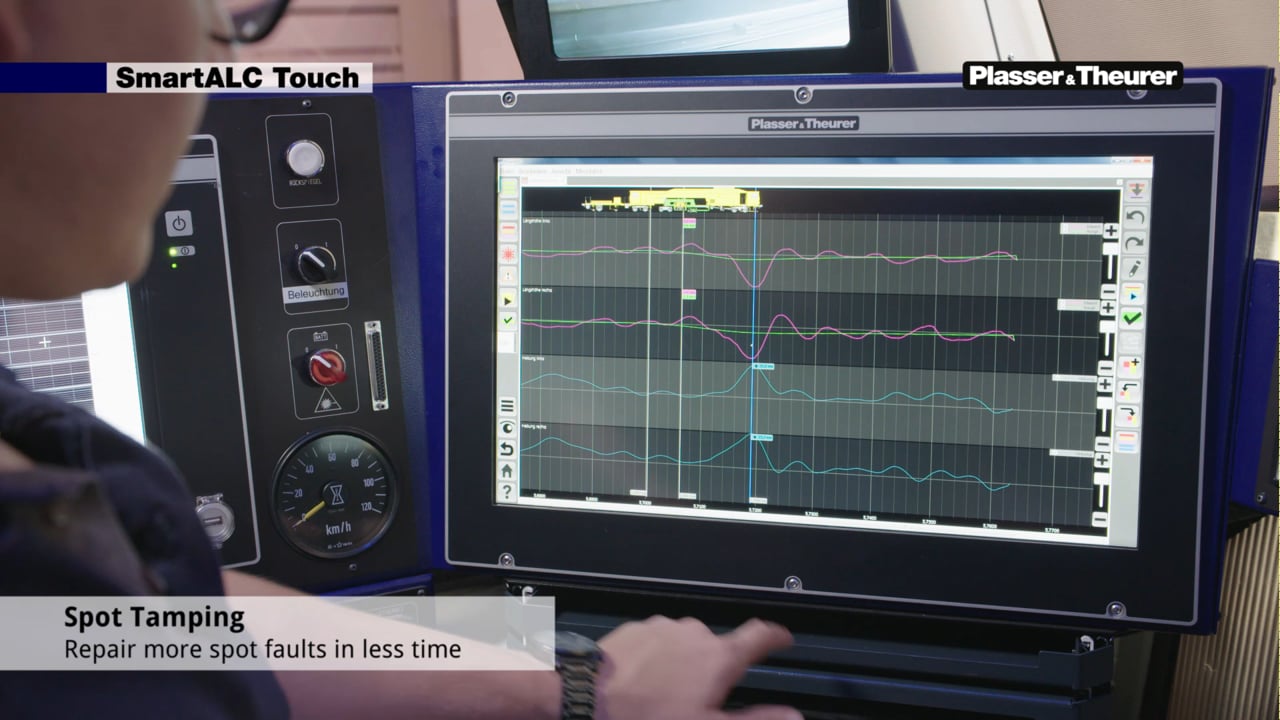Continuous working action - increased output during tamping
30 years ago, a technical concept evolved from an idea to increase the cost efficiency of tamping work. It has continued to set standards even to this day. The technical basis was laid early on: the U-shaped design of the machine's main frame and the positioning of the work units between the axles. However, it was always necessary to accelerate and brake the entire machine mass to be able to tamp. Due to the separation into a continuously moving main frame and a cyclic-action subframe, less than 20 % of the machine mass has to be accelerated and braked.
0 %
of the machine mass has to be accelerated
